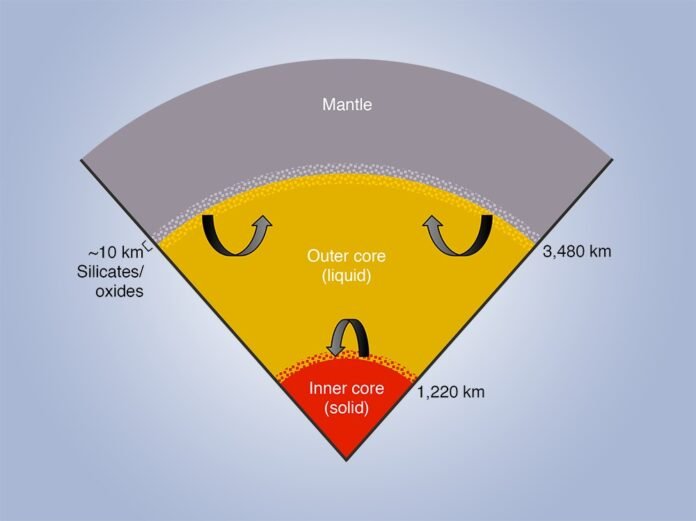
Recent studies have revealed that Earth’s inner core is less stable than previously thought. Research published in the journal Nature Geoscience suggests that structural changes may be occurring within the inner core, potentially affecting its rotation and even influencing the length of a day. These discoveries challenge long-standing assumptions about Earth’s deep interior and highlight the complex interactions between the inner and outer core.
Understanding Earth’s Internal Structure
The Earth consists of multiple layers, each playing a crucial role in the planet’s geodynamics:
- Crust: The outermost layer, where all life exists.
- Mantle: Located beneath the crust, this semi-solid layer drives tectonic movements.
- Outer Core: A molten, iron-rich layer responsible for generating Earth’s magnetic field.
- Inner Core: A solid sphere of iron and nickel, previously considered stable and rigid.
While the turbulence in the outer core has long been acknowledged, its impact on the inner core was believed to occur over vast geological timescales. However, new findings suggest that these interactions may be happening on much shorter, human-relevant timescales.
The Outer Core’s Influence on the Inner Core
The outer core’s turbulent nature has been extensively studied, but recent research indicates that its disturbances may be actively disrupting the inner core’s stability. This challenges the long-held notion that the inner core remains largely unchanged over millennia. Instead, it appears that the dynamic interactions between these layers may be altering the structure of the inner core in real time.
Seismic Waves: Peering into the Earth’s Core
Scientists have relied on seismic waves to investigate Earth’s deep interior. These waves, generated by earthquakes, travel through different layers of the Earth and provide valuable insights, much like medical CT scans reveal the internal structures of the human body. Using highly sensitive instruments called seismometers, researchers have captured seismic wave data to analyze the changing nature of the inner core.
Insights from Repeating Earthquakes
The study focused on data from 121 repeating earthquakes recorded near Antarctica’s South Sandwich Islands between 1991 and 2024. Because these earthquakes originated from the same location, scientists were able to detect subtle changes in the behavior of seismic waves over time. Anomalies in these waveforms suggested unexpected structural shifts within the inner core, prompting further investigation.
Structural Changes in the Inner Core
The findings suggest that the surface of the inner core is undergoing structural modifications. One possible explanation is viscous deformation, a process where solid materials gradually flow under stress—similar to how honey slowly spreads when poured. This discovery indicates that the inner core may not be as rigid as previously believed, but rather a dynamic, evolving structure.
Implications for Earth’s Rotation and Geophysical Processes
Understanding the intricate relationship between the inner and outer core is vital for grasping Earth’s geophysical processes. These changes could have significant implications, including:
- Alterations in Earth’s Rotation: Variations in the inner core’s dynamics may subtly impact the planet’s rotational speed and, consequently, the length of a day.
- Advancements in Geophysical Studies: A deeper comprehension of the core’s behavior could enhance our understanding of Earth’s magnetic field and its long-term evolution.
- Potential Insights into Planetary Science: Studying Earth’s core may also offer clues about the internal structures of other planetary bodies.
Summing Up
The discovery that Earth’s inner core is more dynamic than previously assumed reshapes our understanding of the planet’s deep interior. With ongoing advancements in seismic research, scientists are gradually uncovering the mysteries of Earth’s core, paving the way for future breakthroughs in geophysics and planetary science. As research continues, we may soon unlock even more secrets hidden within the heart of our planet.

